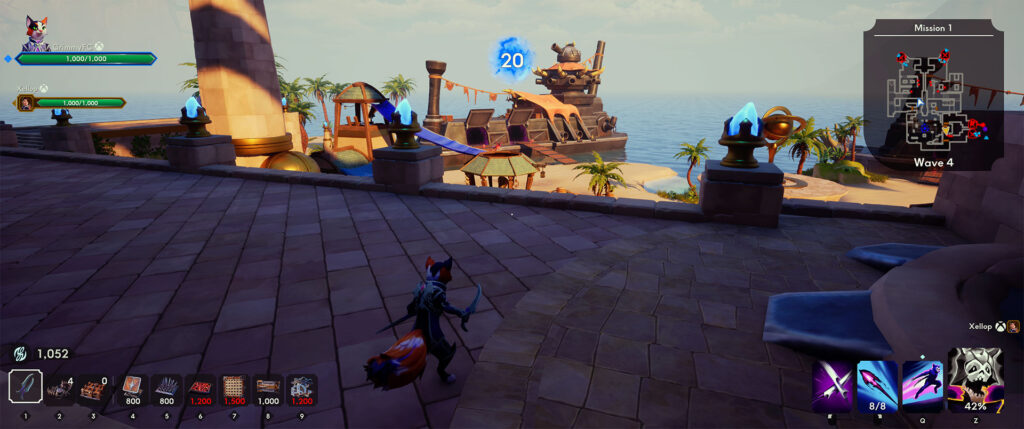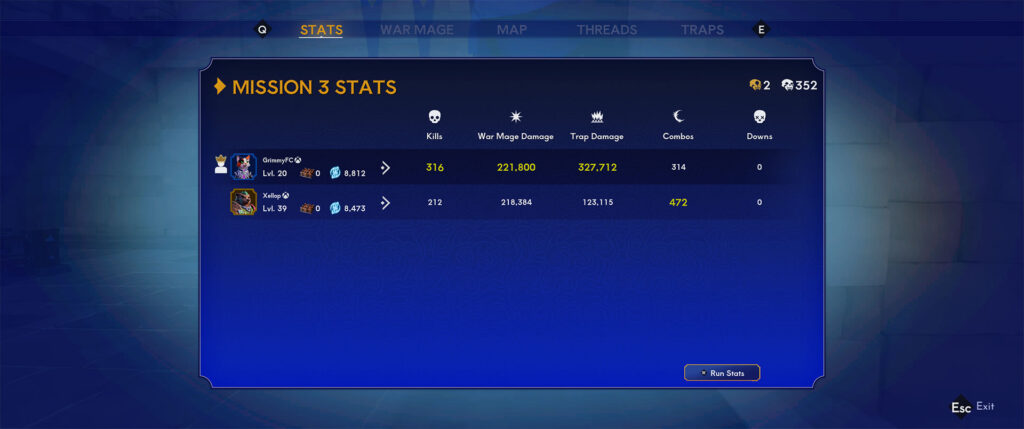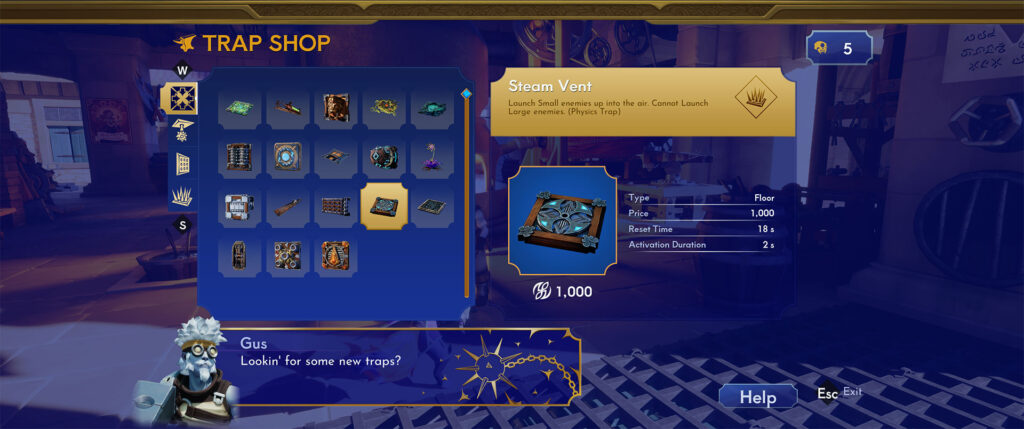Quick Verdict
The Orcs Must Die! franchise is a prime example of games best enjoyed with friends. The formula mixes third-person combat with tower defense, dealing with waves of enemies as you try to protect a rift or two. The original Orcs Must Die! was released in 2011, and over the years, we’ve seen three mainline entries that continued to iterate and evolve the formula. For the most part, the series has remained consistent, adding new traps, characters, enemies, and maps. The latest entry, Orcs Must Die! Deathtrap, takes a different route. Aiming to capitalize on the recent trend of roguelites, the game eschews a campaign for individual missions and meta progression to enhance characters and traps.
In theory, the formula of Orcs Must Die! Deathtrap sounds promising: take the core gameplay that has made the series fun, and add roguelite mechanics to randomize each playthrough. As fans of games like Vampire Survivors, we were excited about the change in the formula, but unfortunately, Orcs Must Die! Deathtrap has several issues that leave us feeling mixed. For some, these changes will be welcomed, but for others, they may be too much of a departure from the mainline series to be enjoyable.
Orcs Must Die! Deathtrap Review Video
A Familiar Bloodbath
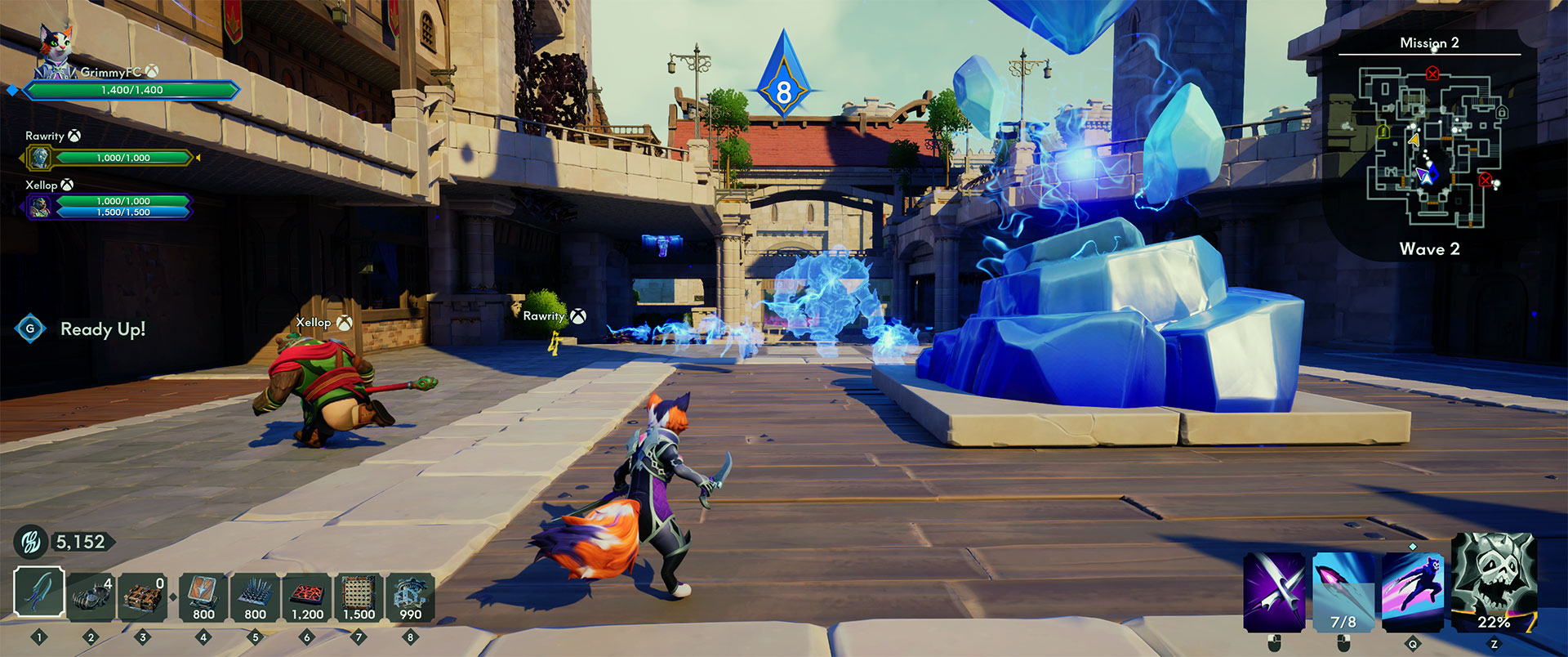
For those unfamiliar with the Orcs Must Die! franchise, the core gameplay loop is pretty straightforward. You’re given time to set up defenses in preparation for each wave, which includes obstacles to direct enemies in the direction you want them to go. The idea is to set up elaborate kill zones and finish off stragglers with your character’s attacks or abilities. Each wave becomes progressively more difficult by adding stronger enemies with the occasional gimmick here and there in the form of a flying enemy or a goblin sapper that can destroy barricades. As you progress, the goal is to upgrade your traps and refine your strategies or even the pathing of the mobs with currency earned from the prior wave.
Past mainline entries in the series focused on a linear campaign with an assortment of maps, which is not the case with Orcs Must Die! Deathtrap. Instead, this title has players start by selecting one of three missions, each dealing with six waves, before choosing another mission. These routes eventually end with a boss mission, which consists of only a single wave. Each time you defeat a boss, the next run adds another mission, progressively increasing the difficulty until you unlock an endless mode after defeating four bosses. In total, there are 11 maps with day, night, and rain variants, and to add a twist, some maps have two rifts to defend. There’s also a new corruption mechanic designed to introduce variability in the maps by creating restricted areas where players can’t place traps.
Murder Mazes and Mayhem
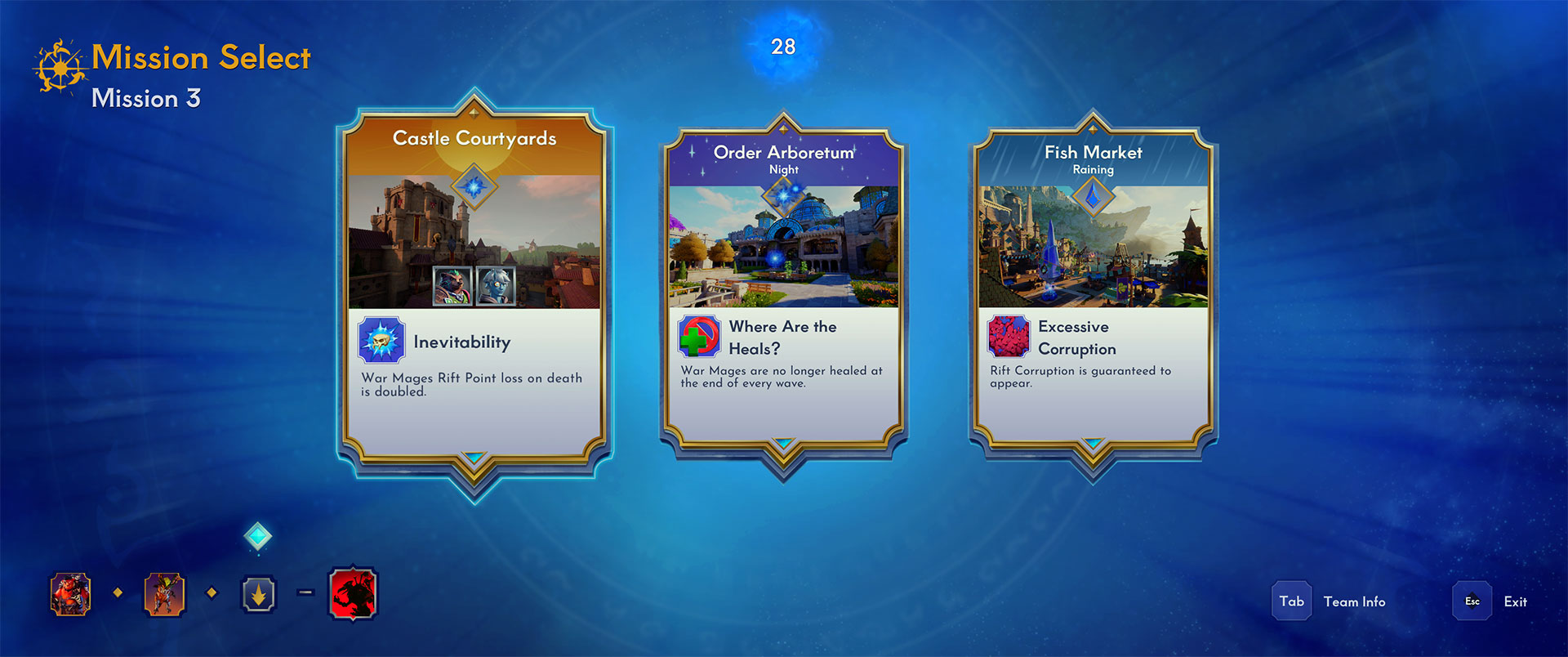
Now, while 11 maps may sound like a good amount, the reality is that you’ll quickly determine which maps you’ll want to avoid. While there are affixes affecting each map when you’re selecting, chances are you’re going to select the one you know best or find the least tedious to play. A bigger issue is how unnecessarily large these maps are. It’s painfully obvious that Orcs Must Die! Deathtrap was primarily designed for four players, and while it can be enjoyed solo, I find it to get a bit boring. Because the maps are so large, you often find yourself standing around, waiting for enemies to enter your kill zone.
In order to balance multiplayer, the game doesn’t just spawn more enemies and increase their health. It also limits the number of traps each player can have on their hotbar and divides the total barricades among the group—though not in an exact ratio. For example, in solo play, you have access to 22 barricades total. With two players, it’s 10 barricades per player, while three players get six barricades each, and so on. Limiting the number of traps one can have on their hotbar isn’t a huge deal since you can just work with your partners to determine who has the strongest traps for each type; however, the overall reduction in total barricades makes things a bit more interesting if you’re used to setting up each map in a specific way.
When I say setting up each map, I’m alluding to using barricades to maze the enemies onto the path that you want them to run. Traditionally, tower defense games are all about creating the longest path for the enemies in order to dish out the most damage. Another issue with Orcs Must Die! Deathtrap is that once you determine the ideal setup for each map, it’s easily replicated. While the corruption mechanic tries to derail this, we haven’t run into an instance where it actually impacted us. In other words, we have setups for each of the 11 maps and corruption has never interfered. Personally, I would have liked to see corruption be even more random and intrusive, forcing players to find new ways to set up barricades.
More Orcs, Less Brains
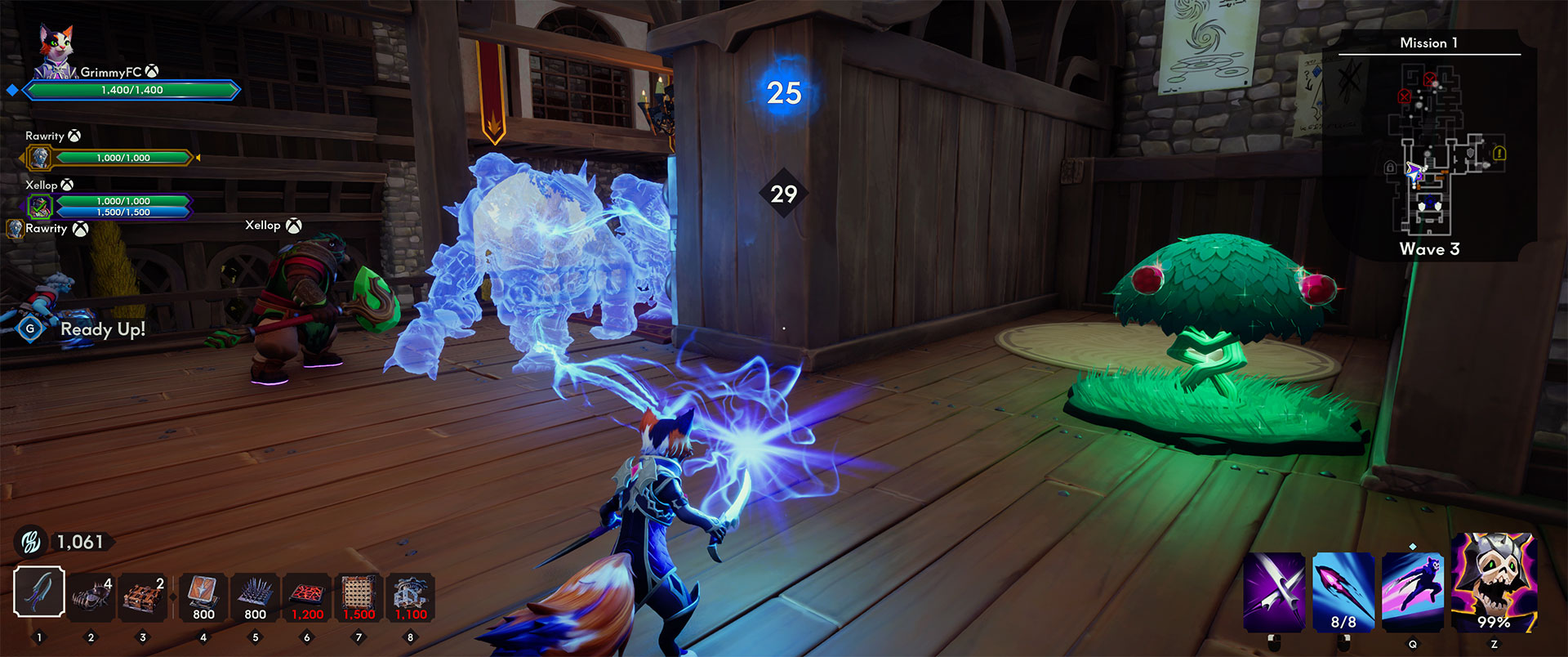
Selecting one of three maps at the start of each mission isn’t the only roguelite element in Orcs Must Die! Deathtrap. After completing a wave, each player is presented with one of the three choices that can impact their traps, character, and more. These are called threads and while most of them are rather basic—increasing critical hit chance of ceiling traps by 10 percent, for example—some lean towards the risk/reward side. There are also some threads that are easy picks, such as making your barricades double wide, which essentially doubles the number of barricades you can have. Like other roguelites, players will have to make a decision on when to abandon their run in order to preserve the number of skulls they’ve collected, which goes towards meta progression unlocks. Failing a run means earning less, as you’re essentially gambling when you choose to progress to the next mission.
In terms of meta progression, it’s fairly standard fare. Players can unlock and upgrade traps, and there’s also a skill tree for each character to boost their starting stats. There’s nothing in the systems here that’s revolutionary or even stands out; it’s mainly about increasing values to make each subsequent run more manageable for progression. There are plenty of upgrades to extend playtime, but ultimately, they don’t require much decision-making. For characters, the game initially offers six to choose from, providing a good variety that caters to multiple playstyles, whether you prefer melee or ranged. There is a hidden seventh character that can be unlocked.
Playing with a group requires each player to use a unique character, encouraging team building. However, if you’ve invested in a character and someone else selects them first, you’ll have to choose another. Trap variety is where the game shines, as expected, with an abundance of options to choose from, whether you want wall traps, floor traps, or ceiling traps. While playing in a group does reduce the number of traps you can have in your loadout, it can be more enjoyable for some groups if you’re communicating about setups.
Old Formula, New Wrinkles
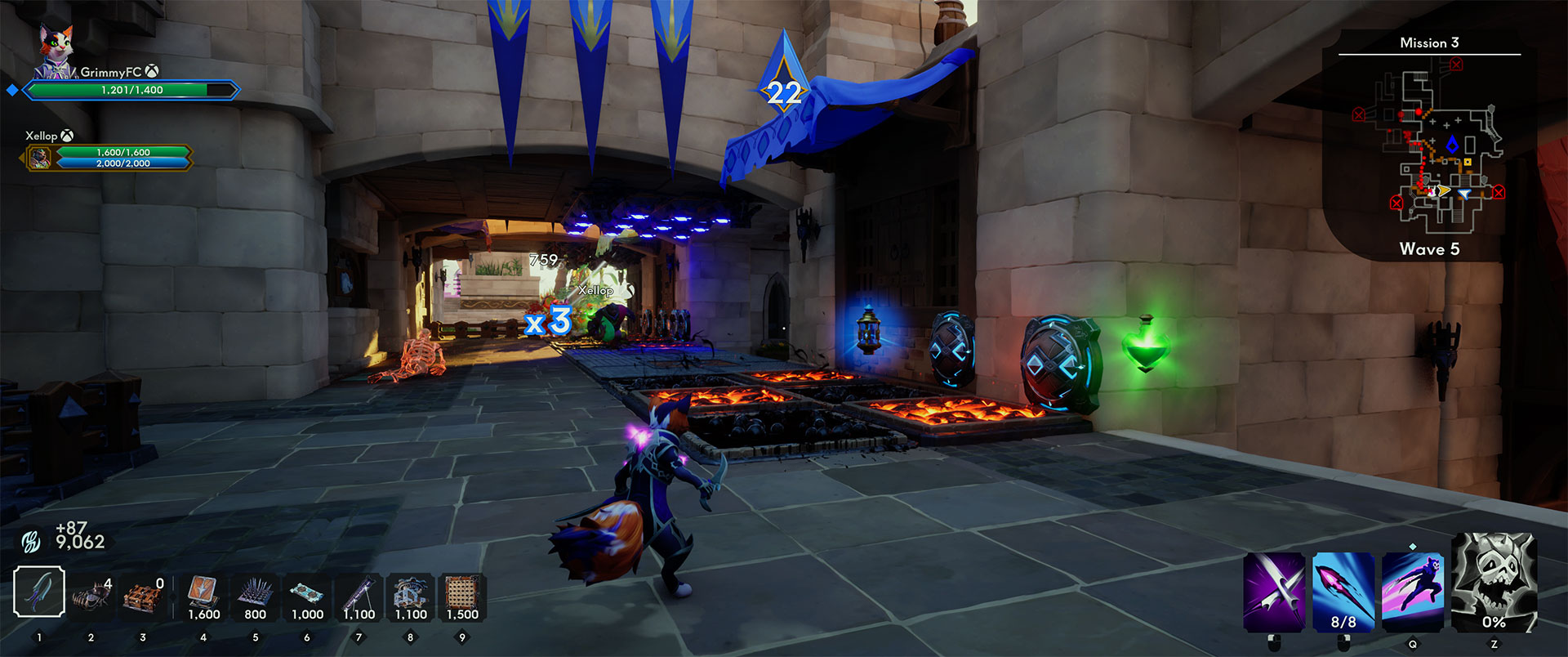
If you’ve played previous Orcs Must Die! games and enjoy modern roguelites like Hades or Vampire Survivors, you’ll have a good idea of what Orcs Must Die! Deathtrap offers. Just be wary that the maps are rather large, and the variety diminishes quickly after a few runs. In addition, there are some quality-of-life features noticeably missing, like markers on the minimap for drops—it’s really easy to miss them if you’re not constantly running around the map. That’s especially difficult to do when you’re playing solo and prefer to protect the rift, but there are drops from enemies in your kill zones.
One of the biggest changes for veterans is the barricade restriction, which is quite controversial. Enemy variety is a bit of a miss too, since you’ll see it all after a couple of successful runs. Also, as you progress further, some of the runs can take a very long time; we’ve had some that took over two hours. To make matters worse, you can only save your progress between missions, not waves—and that’s only available in solo play. If you’re playing in a group, there’s no way to save progress, and if the host disconnects, the run ends.
If you enjoy the gameplay of Orcs Must Die! and have friends to play with, Orcs Must Die! Deathtrap will offer you a couple dozen hours of entertainment. How much fun you’ll actually have, however, depends on how much you like the changes to the formula. I’d argue the roguelite elements aren’t exactly game-changing and don’t justify the removal of a campaign. Ironically, the game’s biggest downfall is the overall lack of variety, even though roguelites should inherently offer more choices and variability in each run. If you’re looking to enjoy this solo, it’s probably best to check it out on Game Pass.
Orcs Must Die! Deathtrap official release date is January 28, 2025 on Xbox Series X|S and PC. This review is based on the PC Game Pass version of the game. While FullCleared does have affiliate partnerships, they do not influence our editorial content. We may, however, earn commissions for products purchased via affiliate links.


